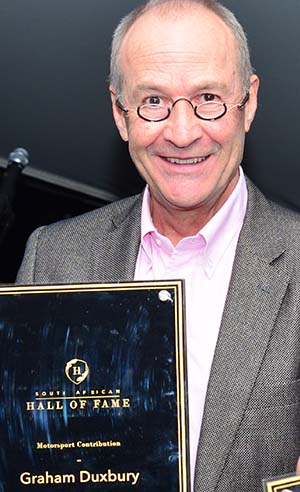At this year’s British Grand Prix, Formula One embarked on an experiment which involved a major rules and format shakeup relating to qualifying. Fans had to accept revised schedules, recognise unfamiliar naming conventions and understand that a “race” is not always a race in the true sense of the word.
 By Graham Duxbury
By Graham Duxbury
The Sprint Qualifying format, following F1’s sporting regulations, involves a change in the familiar programme. There is only a one-hour practice on the Friday morning ahead of conventional, three-part (Q1, Q2 and Q3) qualifying in the afternoon. This sets the starting line-up for the new Sprint Qualifying session the following day.
Saturday morning sees another practice session before the Sprint which is, in fact, a 100km race (but don’t call it a race, say F1 officials!). Points are awarded to the top three finishers (on a 3-2-1 basis) and the result establishes the grid for Sunday’s GP. The winner gains “pole position” a term now exclusive to the GP.
The concept of Sprint Qualifying is an attempt by F1 to “spice up the show” and create an unanticipated starting order. Will it succeed?
Qualifying for a GP has gone through many iterations. Pre-war, the grid order was determined by drawing lots. From 1950 the grid was set according to lap times posted in practice/qualifying.
In the late 1970s and 80s, for safety reasons, pre-qualifying sessions were introduced to weed out the slowest cars. Pre-qualifying was discontinued after 1992 when many under-performing teams left the sport.
Prior to 1996, two official practice/qualifying sessions were usually held (although there were circuit-specific variations), one on the Friday and another on the Saturday before the race on Sunday. With only a limited number of restrictions, special one-lap qualifying tyres and “grenade” engines (in the turbo-era of the 1980s and early ‘90s) were common.
The first made-for-TV qualifying occurred in 1996 when the grid was decided by a single one-hour session on Saturday. Drivers were permitted 12 laps in which to set their fastest time.
In a bid to increase TV audience appeal, rules were revised to mandate only one qualifying lap in each of two sessions, one on Friday and another on Saturday.
One-lap qualifying became popular and in 2004 both qualifying sessions were held on the Saturday. Just a year later, the rules were tweaked again. This time the grid would be decided by aggregating the times from two qualifying runs – one on Saturday afternoon on low fuel levels and one on Sunday morning with cars running “race fuel” levels. This was soon dropped in favour of a one-lap qualifying session on Saturday afternoon on race fuel.
It was all change again for 2006 when multi-lap qualifying returned – but with a significant variation. This was the introduction of the “three sessions and a final 10-driver fight for pole” format we know today with slow cars being progressively eliminated from the running. Complexities around what was deemed to be race fuel levels (and how to police them) existed but disappeared with the ban on refuelling in the turbo-hybrid era.
While the three-part format continues today, there was an unfortunate aberration in 2016 which lasted for only a few races. The short-lived and unpopular rule gave drivers a limited period within Q1, Q2 and Q3 to set a lap time, failing which they would be eliminated.
Is the latest Sprint Qualifying format the best yet? Certainly, the excitement factor is high, with tensions building from Friday through to Sunday.
Is it perfect? Perhaps not. I would prefer the use of familiar terminology. The fastest driver in the Friday qualifying should still occupy “pole position” for the Sprint. And the Sprint is undoubtedly a “race” and should be identified as such, even though it simply sets the grid for the GP.
Are the points awarded to Sprint finishers important? Or is the reward of a good starting position in the GP sufficient incentive? F1 motor sports and technical director Ross Brawn has intimated that he doesn’t want these points to change the outcome of the title fight.
Of course, there are downsides to the new format. If a front-runner crashes in the Sprint, then fans could be denied a more exciting GP – as was the case with Sergio Perez at Silverstone.
Despite the negatives, the format seems to have found favour and could be employed in six or more races in 2022.
